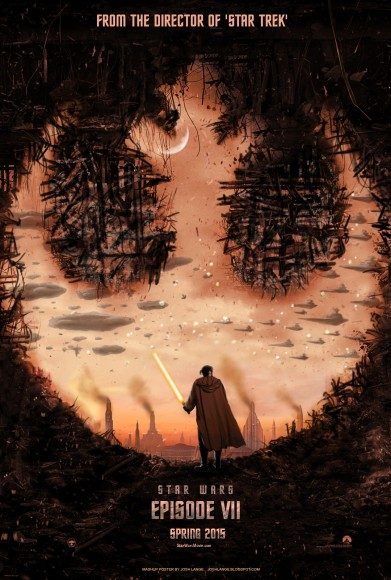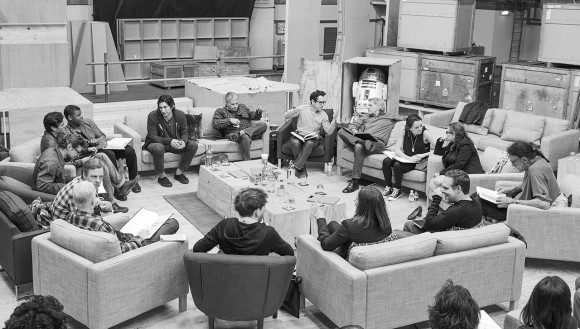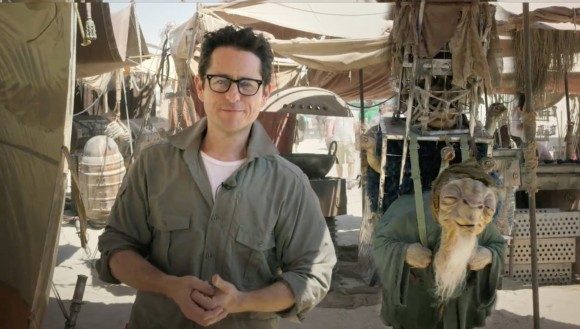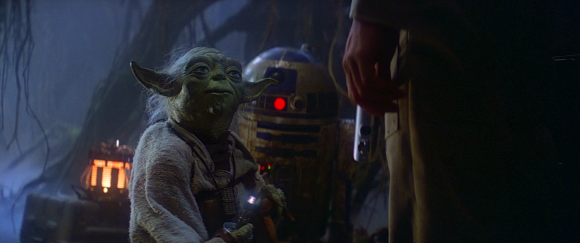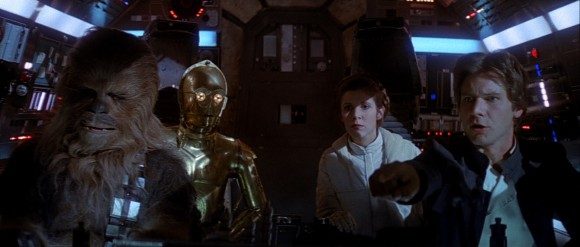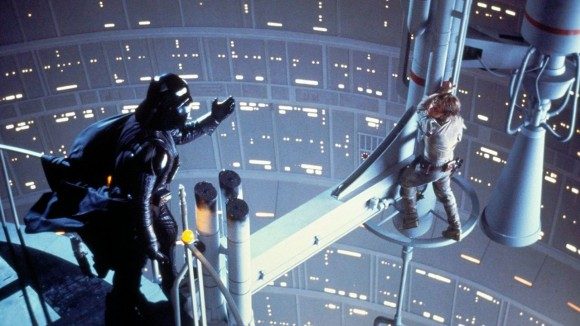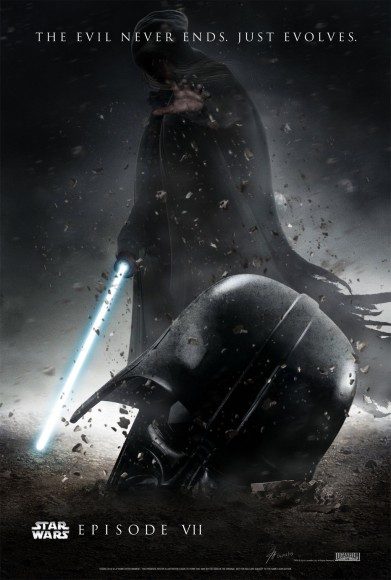“No movie sequel is better than The Empire Strikes Back.” You might eat those words for Xmas dinner in 2015. Joy & Indigestion to the world!
— Anthony Daniels (@ADaniels3PO) November 3, 2014
… well then.
Break the internet, Anthony Daniels. With just one simple tweet, on Sunday November 2nd, the C-3PO performer set the world of Star Wars fanboys abuzz. His implication that the J.J. Abrams-helmed Star Wars Episode VII: The Force Awakens (which we’ll just be calling Force Awakens from now on, because boy, is the full thing a mouthful) might just become the best Star Wars sequel is the very definition of “Fighting Words.” Millions of fans have been collectively holding our breath, silently willing this new film to be good, but really? Is this the film that will finally top long-time favorite and object of religious fervor Empire Strikes Back? Could this be true?
Now, there are plenty of reasons to take Daniels’s statement with a grain of salt, not the least of which is the fact that he is a member of Abrams’s cast and not exactly what we’d call an impartial observer. (Although, for some interesting thoughts on why this might be a reason to get more excited rather than less, click here.) And if you’re looking for reasons to be cynical about this new film’s prospects, there’s plenty of those to go around. Abrams’s… let’s call it divisive appointment as director, the drama involving the rejection and rewriting of material by Pixar mainstay Michael Arndt, and the decision to bring back original cast members for expanded roles are just the tip of the eyebrow-raising iceberg.
But let’s put all of that away for fifteen minutes and embrace an uncharacteristic bout of optimism. Remember optimism? That thing that we all had before we met Jar-Jar Binks? Let’s take Daniels’s statement at face value and, for the sake of argument, roll with the idea that The Force Awakens is going to be the film we’ve been waiting for all this time – the best Star Wars sequel yet. What would something like that even look like? Making a great sequel is an incredibly challenging mission to undertake. On top of making a great film, no easy feat, you have to deal with the baggage of the preexisting intellectual property and strike the right balance between the familiar and innovative. You have to tackle the… formula might not be the right word here, but certainly the expectations the material brings with it, the great collective idea of what something branded “Star Wars” ought to look, sound, and feel like.
So how do you do it? In an effort to wrap our minds around this idea, let’s look back on the great lessons that The Empire Strikes Back gave us in sequel-making, think about how they might gel with The Force Awakens, and see if we can come up with something that will push the Star Wars boundaries even further than that. Ready, set, g-
Okay, wait, one more thing just in terms of the rules of the game here: I’m going to make a conscious effort in these suggestions to not directly contradict anything that we already know about the production of The Force Awakens. The goal here is not, “How to make the Platonic ideal of a Star Wars sequel?” but rather, “How can this film be as good as we want it to be?” I personally fall into the camp of Star Wars fans that wishes that Mark Hamill, Carrie Fisher, and Harrison Ford were not involved in this production, but I’ll steer clear of suggestions that are not compatible with what we’ve discovered so far. I’ll also stick mostly to conceptual and screenwriting matters rather than technical details or choices in artistic talent on hand. And if you’re so adverse to spoilers that you don’t even want to hear fan theories or production rumors, watch out because we’re going to discuss some of those, too. Now, without further ado, the top five things we’d like to see to make The Force Awakens the best Star Wars sequel ever.
1. Take Us to New Places
Think about this for a moment: Empire Strikes Back is the only Star Wars film in which we do not visit Tatooine. Despite the fact that the filmmakers have a sandbox literally the size of a galaxy on their hands, the non-Irvin Kershner directed episodes tend to keep themselves fiercely grounded to certain recurring locales, characters, and situations. Not Episode V, though – that’s the one that seemed completely committed to putting familiar faces in scary new places. You get your ice planet, your cloud planet, your swamp planet, your cave of psychological horror, your gigantic space monster stomach (in an asteroid field, no less), and you tear up your main group of characters and keep them apart for two-thirds of the film. Then you literally tear apart one of your characters and keep him in pieces for a third of the film… the list goes on. Empire came across as fresh because it didn’t feel like it was just cruising with the first film’s creativity on auto-pilot. If anything it felt more illustrative, more expansive, weirder (definitely weirder), and more boundlessly imaginative than its predecessor.
How Can The Force Awakens Do This? Okay, so we already know that they’re going back to Tatooine on this new one, but I don’t just mean new places in terms of geography. Empire Strikes Back concludes its first act with an enormous ground battle, something totally unlike anything the first film had attempted. Let’s have something that feels as different as that in this new trilogy. How about seeing a hand to hand combat scene in a zero gravity scenario? What kind of crazy choreography might you be able to come up with if you’re trying to put together a lightsaber duel in that situation? Or how about something that shows an exciting battle between a Jedi and a non-Jedi, the way this cinematic clip from Bioware’s tie-in game The New Republic does? Phantom Menace’s two vs. one lightsaber duel was solid, but like so many things in the prequel trilogy, it was an adjustment of intensity rather than one of type. What we need is a few sequences that cannot be easily compared to any scenes in the first three films.
2. Capable, Threatening, and Nuanced Villains
Don’t get me wrong, the villains in A New Hope are hardly pushovers. They capture the princess, track down the rebel base, blow up a planet – it’s a very respectable showing. But Darth Vader and the forces at his disposal get a major villain upgrade in the time between Episodes IV and V. The Empire in the second film feels truly and completely implacable, with endless ships, personnel, and bounty hunters at their disposal. Whether by ruthless cunning, Sith dark magic, or sheer brute force they stomp through a hidden base, strangle their own low achievers, freeze everyone’s favorite smuggler captain, and maim the series’ main character before calling it a day. Having a villainous presence that effective is the sort of thing that makes everything else in the film operate at a much higher level. The suspense sequences feel tenser, the moments of respite feel more cathartic, and every minor victory by heroes makes them seem all the more heroic and capable because of how resourceful and plucky they have to be to earn them. It’s not, however, just a matter of evil efficiency, it’s also about how insidious the villainous presence gets to be. Just think about the role that Lando Calrissian plays in this film. Suddenly the easy divide between likable good guys and unsympathetic bad guys starts to get blurry, and people sticking the knife in are shown to be made out of the same material as our main characters.
How Can The Force Awakens Do This? They’ll need one hell of a villain driving the plot. Word on the street is that Adam Driver (of Girls fame) is going to be the bad guy on call for this new film, and the words “Jedi Hunter” have cropped up a few times. Badass as that sounds, the proof will be in the pudding: he will have to be a smart, competent, and borderline unstoppable adversary, one whose influence (and this is the key) will be able to stretch so far as to turn something that the heroes think is firmly in their camp against them. Whether this comes as a dramatic revelation about their past, a sudden betrayal, or something more surreptitiously subtle, his ability to create adversity and uncertainty on both the plot and the personal fronts will be the key to his success. This year’s How To Train Your Dragon 2 was largely modeled on Empire Strikes Back, but their bland, generic villain Drago Bludvist was one of that film’s weakest points. Learn from your peers, The Force Awakens, learn from your peers.
3. Development of the Returning Characters…
… without losing sight of who they were in the first film. Empire Strikes Back is a masterclass in character development, taking the base models of who each of the main characters were in the first film and putting them through all kinds of interesting turns and reversals. Luke is much more confident and grounded, not quite the wide-eyed, insecure kid from the first film. He’s come so far, in fact, that he overconfidently charges in and almost gets himself killed. Han spends the entire film insisting that he’s still looking out for number one, only to sacrifice himself for the others at the end of his story. Leia, who was an object to be rescued for both the first two acts and the final, climatic battle of the first film, ends up being the take-charge rescuer for almost all of Empire, managing to save Luke… but not Han. These are all smart developments not just because they further the characters from where they were in the first film, but also because they are grounded in the major defining traits and roles they played in the first film. Even Vader gets his own evolution, teased throughout all of the film, from single-minded kill-bot to something much more complicated.
How Can The Force Awakens Do This? The key will be the film’s ability to have the new characters’ personal arcs and evolutions be as deeply thought out as the ones in the first trilogy. Just as A New Hope seeded the character growths that paid off in Empire Strikes Back, The Force Awakens will need to delineate the character dynamics that will rule over the next three films. The masterstroke, however, will be how well these character arcs will gel with the ones that we saw Luke, Han, Leia, and the rest of the gang go through in the first two films. Episode VII will feel more like a successful follow-up to the original trilogy if the new characters’ journeys reflect or comment on the personal evolutions that we’ve already seen, be it through echo, intensification, or reversal. Perhaps the new lead will be a headstrong, cocksure young Jedi, set on a journey of growth that reads like a mirror image of Luke’s. No matter what they do, however, the goal of creating three-dimensional beings with the promise of growth will remain a constant.
4. More Personal Stakes
Why does the climax of Empire Strikes Back feel more memorable than the one in A New Hope? The stakes are higher in Episode IV, with the fate of the entire Rebellion (not to mention anyone else living on Yavin IV) hanging in the balance. Which is great, but those are plot stakes. Empire Strikes Back focuses inward: the only things in danger are the lives of five people and two droids. The space battle in A New Hope could have physically killed Luke, but the lightsaber battle with Vader, with the twin revelations of what really happened to his father and that Obi-Wan lied to him, come close to destroying the young hero psychologically. Empire understands that imminent destruction of the world is nice, and it maintains those stakes in the background, but it pales in comparison to what pulling the rug out from underneath the audience’s emotional understanding of the world can do.
How Can The Force Awakens Do This? Again, the film must be unwilling to pull any punches with the idea of how much evil can corrupt the good in the galaxy. Why is Adam Driver hunting Jedi? Why has Luke Skywalker disappeared (as is a persistent plot rumor)? The answers to these questions should not be related to just the presence of evil in the galaxy, but rather to the idea that the things that we’ve always thought of as good and evil might not be as clearly separated as we want to believe. Darth Luke Skywalker, anyone?
Now, if The Force Awakens does all of this, if it takes us to new narrative heights with threatening and compelling villains, features returning faces that are changed but recognizable, and keeps its focus on our emotions about the characters rather than our appreciation of the plot, we might have something that approaches the level of something like The Empire Strikes Back. But that wasn’t what Mr. Daniels said, was it? He clearly stated that we’re going to be getting something even better, something that’ll be the new owner of the mantle of “Best Star Wars sequel.” What’ll it take to push this thing into that territory? How about…
5. A New Kind of War
The Empire against the Rebellion. The Republic versus the Separatists. The Jedi versus the Sith. There are a few constants in this saga, and the second word in the title has always been one of them. Any peace in the Galactic Republic is short-lived, and we soon land back at the conflicts that are always at the center of these films’ plots. But how about changing up the basic formula in some major ways? For years fans have been clamoring for a filmic take on a Jedi Civil War, a conflict that is, for once, not completely based on the divide between the light and dark sides of the Force. Or how about a three-way war, something that complicates the issue beyond a simple matter of right vs. wrong? These are just some basic ideas, but after six movies of armies throwing themselves against each other, the Star Wars formula might be ripe for some major reinvention. Empire Strikes Back is easily the entry that strays the farthest away from the formula, striping away the huge armadas to present a more personal story about a small group of people. To truly rise above the pack, The Force Awakens will have to reinvent wheel, presenting something that sparks the imagination and captures the spirit as much as A New Hope did in 1977.

